Paying it forward: Why we need YOU to give blood
Author: Jeannie Callum, MD, FRCPC
Dr. Jeannie Callum is the Staff Hematologist and Director of Transfusion Medicine and Tissue Banks at the Sunnybrook Health Sciences Centre, as well as an Associate Professor in the Department of Laboratory Medicine and Pathobiology at the University of Toronto.
In this article, Dr. Callum shares her real-life experience witnessing the impact of blood donation on patient lives. She provides some fascinating insight into blood transfusion, past and present, and emphasizes the need for more male donors, explaining why some donors may be safer than others for patients. This article is also being published in six parts on RED, our Research, Education and Discovery blog.
Part 1: A miraculous gift – Ready and waiting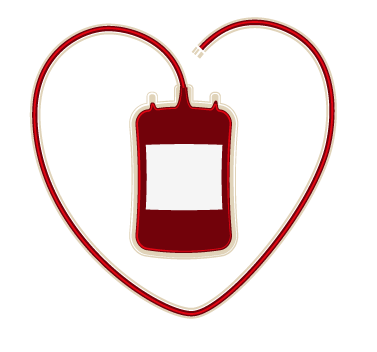

In health care, we take blood donation and transfusion for granted. We don’t do it on purpose, but it’s such a common intervention that we don’t think much about it. Actually, a remarkable 10 per cent of patients who get hospitalized receive a blood transfusion. Day in and out, physicians order blood for a patient and the units come from the blood bank routinely and without question; the miracle of one person receiving blood from another’s donation fades into the backdrop. But once in a while, you see a patient brought back from the edge with transfusion. It was just such a patient that sent me with pen to paper to write about just how essential blood transfusion is for saving lives, and why YOU need to donate; and more specifically, why more men need to donate.
Recently, a patient of mine with an immune blood disorder came to the emergency department in crisis. Every few years, his immune system gets confused and starts destroying his own blood. Usually the target of the attack is his platelets, which are small fragments of cells that help to stop bleeding. This time his immune system started to destroy all of his red blood cells. Red blood cells are donut shaped cells filled with a protein called hemoglobin that shuttles oxygen from your lungs to the rest of your body. Without red blood cells, you can breathe in and out, but the oxygen won’t get picked up from the lungs and transported to the cells throughout the body. Essentially your cells start suffocating due to the lack of oxygen.
It started with red urine. Hemoglobin is red. When the red blood cells are blown up and destroyed, the hemoglobin is released into the blood stream. It is toxic when not appropriately contained within a cell membrane. The kidneys are particularly sensitive to the “free” hemoglobin and start leaking it into the urine. In a few days, his hemoglobin level dropped from 147 g/L, a normal level, to 79 g/L, and then over a few hours his immune system picked up speed and took the level down to 29 g/L. Eighty percent of his blood had been destroyed. He told me: “I feel like my body is trying to commit suicide.”
By the time we got the results of his very low blood level, he was losing consciousness. We grabbed four units of red blood cells from the blood bank and gave them to him over the next few hours. He went from the edge of life to sitting up chatting in the intensive care unit — an overwhelming relief for his family and his healthcare team. I immediately thought of those four blood donors. I wanted to pick up the phone and tell those four people about the life they had just saved.
Of course, I can’t do that. We don’t connect donors with patients; there is a confidential divide between them. Staff at the blood collection centre know who the donor is, and we at the hospital know who the recipient is; but never the two shall meet. My patient needed 20 units of blood before we were able to rein in his immune system so that he could safely go home.
I witness the miracle of transfusion regularly. I see it often in our trauma room. Patients with motor vehicle injuries come in without vital signs, but trauma room nurses have four units of blood ready and are able to promptly bring them back from the edge. About every six to eight weeks, a healthy woman comes in to deliver a baby, but when the placenta separates after birth the uterus refuses to contract and she starts bleeding profusely. There is such high blood flow to the uterus at term to nourish the infant that a woman can lose her entire blood volume through a bleeding placental bed in seven minutes. Fortunately, we are ready every time with enough blood to buy time for the obstetricians to gain control of the hemorrhage.
It is not just these dramatic bleeding cases that amaze me; it’s the chronic transfusion patients as well. We run an outpatient transfusion program at my hospital that supports patients with bone marrow failure from either a diseased bone marrow or leukemia. These patients sometimes need weekly transfusions of blood for two to four months while awaiting a remission induced by chemotherapy or from a bone marrow transplant. Some patients get from 50 to 100 units in one year to keep them alive; 50 to 100 blood donors just to support one person. Some patients in our outpatient transfusion program have been coming in weekly for transfusions for more than five years.
There are also the premature infants that need regular transfusions for the first few months of life. We use what the blood bank technologists call “a unit on tap”; a single unit lasts 42 days and we can take off a few tablespoons every few days and send it up to the neonatal intensive care unit. We have a special fridge just for the units on tap. There is no doubt in my mind that all of these patients would die without the magical gift of blood transfusion.
Part 2: Not your average bank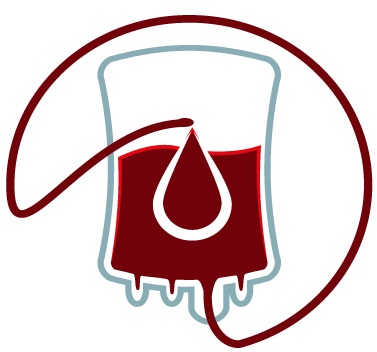
Dr. Bernard Fantus (1874–1940) started the first US blood bank at Cook County Hospital in Chicago in 1937. Fantus did not call it the “Blood Bank”, but came up with a much more professional name, “The Blood Preservation Laboratory.” Apparently, his wife told him the name was too fussy and to call it a “Blood Bank” instead. The name stuck, not just at Cook County Hospital, but around the world.
Large hospital blood banks are staffed with a rotating team of 20 to 50 medical laboratory technologists to cover the hospital operations 24 hours a day, seven days a week. Most of the blood bank technologists have a Bachelor of Science degree and a three-year technical degree in laboratory medicine. During those three years they rotate through each of the hospital labs: microbiology (where they figure out which bug is making you sick); chemistry (where they are able to run a battery of hundreds of tests on your blood and urine); hematology (where they count the cells in your blood); coagulation (where they figure out why your blood can not clot properly); pathology (where they figure out what kind of cancer you have); and finally, the blood bank. The technologists that self-select to go work in the blood bank are an unusual group. They seem to thrive on extreme stress — If they worked on Wall Street they’d be traders.
When I walk into the blood bank before a trauma has arrived or when someone has started bleeding in the operating room, it is ultra-tidy. Blood inventory stocks are at 100 per cent. At my hospital’s blood bank, we keep 80 group O units as our stock maximum and the technologists get nervous if the level drops much below 70 units. To keep the stocks at 100 per cent, they re-order stock from Canadian Blood Services throughout the day as blood is used. They like the deck cleared and ready because a trauma could arrive at any moment. We get a call before the trauma patient arrives to let us know a bad case is coming. A technologist prepares four units of group O blood in a cooler to send to the trauma room. Group O blood is the universal donor.
Those of us who are group O bear a greater burden on the blood donation side because of emergency blood use. When the trauma arrives, if the patient is very unstable, the surgeon triggers our bleeding code, “Code Omega”. “Code Red” would be the logical code for this situation, but the fire department had already taken “Red”. “Code Omega” was invented by our obstetrical colleagues to avoid announcing to everyone visiting the hospital that we have a woman massively bleeding at the time of delivery. We don’t want new grandmothers fainting when they hear the overhead announcement, “Massive hemorrhage in Labor and Delivery”. The bleeding code allows for a standardized, coordinated, and rapid resuscitation.
A dedicated porter races back and forth with cases of blood and lab samples. Special rapid blood infusers, that warm the blood, are brought to the bedside. Body warmers are used to keep the patient body temperature close to 37°C (or 98°F). Every degree drop below 37°C increases blood loss by 20 per cent. Blood doesn’t clot in the cold. The technologists prioritize this patient to the top of the list. The CT scan technologist (to figure out how extensive the injuries are), the angio suite physicians and nurses (where specialized radiologists inject glues into leaking blood vessels), and the operating room get prepped for the patient arrival.
During a trauma or “code omega” resuscitation, blood bank technologists go into almost-silent team work mode. One techonologist starts testing the patient’s blood sample. We need to turn around the testing fast as we cannot afford to deplete the group O blood stocks. By testing we can get the patient onto their own blood group if they are A, B or AB, otherwise we risk running out of group O blood. Another technologist packs the trauma stock blood into a cooler to keep “four pints ahead” at all times. The clinical team knows they don’t need to call ahead; they know the next case of blood is always ready. Another technologist gets the AB plasma (the universal donor type for the liquid part of the blood that contains the clotting factors) and places it in the plasma thawer — a warm water bath that shakes the frozen plasma up and down to speed up the thawing process. The team grabs 10 units of a product called cryoprecipitate that is enriched with clotting factor I called fibrinogen, a key factor to stop bleeding, and prepare that to thaw as well. While the frozen products are thawing, they label up some platelet units.
Over the four hours after a severe trauma arrives, the blood bank can expect to issue 20 to 200 blood units. Every one of these products originates from different blood donors. And, the blood bank goes through this routine many times a week.
Part 3: Blood type hype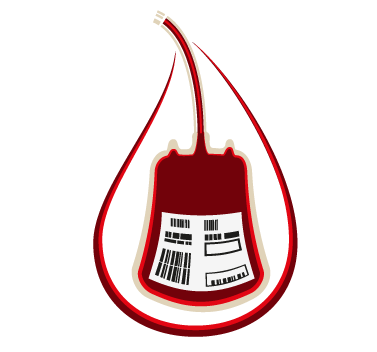
A lot of people are fixated on their blood group and what it means for their health. Some people even eat certain foods based on their blood type. To prevent transfusion complications, two key blood groups are very important to match. The first is the ABO blood group system. The ABO are carbohydrate (sugar) antigens that decorate our red blood cells. About 100 years ago, Dr. Karl Landsteiner (1868-1943) discovered this antigen. Approximately 45 per cent of us are group A and 45 per cent are group O, with the other 10 per cent being the less common groups B and AB. If you give group A blood, in error, to a group O patient, you run a good chance of killing them.
Humans all started as group A+. Frankly, if you are any other blood type you are a mutant, or as I like to think of my O- self, more highly evolved. Hundreds of thousands of years of competition on this planet with our foe, the malaria parasite, has driven this antigen off of our red blood cells. In the “malarial belt” of sub-Saharan Africa, 80 per cent of people are group O. There are unexplained disease prevalence differences between group O and A individuals. Group O individuals have lower rates of stomach and pancreatic cancer, but have higher bleeding rates.
There was a renowned blood group rivalry between two famous English scientists, Drs. George Garratty (1935-2014) and Peter Issitt. Garratty was group O and Issitt group A. They sent papers back and forth espousing the superiority of their own blood group. Garratty sent an article finding that group O individuals had higher IQs, only to be mailed back an article from Issitt describing the resistance of group A individuals to the Plague with an attached note, “A lot of good your high IQ is going to do when the Plague comes back.”
Rhesus matters
The positive “+” and negative “–” that accompanies your blood type refers to the presence or absence of the Rhesus D protein on the surface of the red blood cells. Rh is the other important blood group we need to match blood for in transfusion medicine. This protein decoration on our red blood cells is highly immunogenic. About 15 per cent of Caucasians, seven per cent of people of African ancestry, and fewer than one per cent of Asians are Rh negative — which means that they are missing this protein antigen. The entire D gene is deleted in Rh negative individuals. Historically, we really have no idea why the gene deletion happened and why it became so common. All I can say is that it creates a lot of work for blood bank technologists, and it results in having to keep eight blood group drawers instead of four.
Anti-D
As I mentioned, the D antigen is very immunogenic, meaning on first exposure the body becomes permanently immunized to the foreign protein. It causes the most havoc in pregnancy. All Rhesus D– pregnant women are injected with anti-D antibodies from donated blood. The antibodies in the donated blood hide the antigens that are on the surface of the fetus’ red cells trafficking in the mother’s blood. Without this treatment (a type of immunotherapy), D– women would destroy their infant’s blood, limiting their number of successful pregnancies. We almost never see this problem in modern times, which is a remarkable scientific achievement. It is this scientific advancement that allowed me to marry the guy I loved, without regard for his completely incompatible A+ blood group.
Part 4: Beyond matching ABO and Rh — Rare blood challenges and international cooperation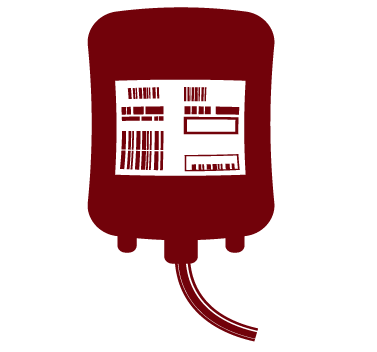
In addition to ABO and Rh, there are 346 other blood group antigens that patients can react against. This leads to even more stress for the blood bank technologist.
A few years ago we looked after a lovely 30-something young lady with breast cancer that had spread to her bone marrow, which limited her production of blood. She was sent to our transfusion unit for two units of blood to permit another course of chemotherapy. Everything was fine for two weeks, then she started to feel unwell. Her immune system was attacking one of those 346 antigens. We tested her plasma against our standard 11-donor panel (a tool for identifying the antibody’s target). She was incompatible with all donors. She had an antibody against an unidentified protein that is present on more than 99.9 per cent of all blood donors. We had to find the “golden-ticket unit”; the one in a thousand units lacking that protein. There was another challenge. Her hemoglobin was under 60 g/L and she needed the blood now. We had to determine exactly which protein she was reacting against quickly.
Blood bank technologists have a saying for when things go miraculously right: “the blood banking gods were shining down on us.” This time, there was a patient in hospital undergoing a hip replacement, who had a complete deletion of the Kell antigen blood group. This patient was the only person in Canada known to have this rare blood group. We had samples from both of these patients and we tested to see if they were compatible. Bingo! The hip replacement patient had the same extremely rare blood group as our breast cancer patient. Now we at least knew what kind of blood she needed.
Our hip replacement patient had fortunately pre-donated numerous units of blood in preparation for her surgery. The patient was on the rehab floor, hadn’t needed the units yet, and was recovering nicely. We had her two fresh units in inventory, and several frozen units stored away just in case. It was an awkward situation, but I needed to ask if we could use her blood for someone else in need. I explained the dilemma. I was asking her to agree to give some of her pre-donated units to another patient who urgently needed them. Thankfully, she had been a lifelong blood donor, so of course she said yes. She was so honored to be able to help and willingly gave up some of her units. This was the first time she had any idea about where her blood donation was going. Weeks later, we arranged for her to receive an anonymous letter of thanks from the recipient. I talked to her on the phone the day she received the letter; she said it had brought her to tears.
Both of these patients were born missing a whole cluster of proteins, called the Kell antigens, on the surface of their red blood cells. Each of the antigen groups is named after the last name of the first patient to be discovered missing one of the antigens. Kell was named after a pregnant woman, Mrs. Kellacher, who ran into problems in the 1940s with hemolytic disease of the newborn. Most of the antigens are named after people who ran into trouble in pregnancy or after a transfusion, they have names like Kell, Kidd, Duffy, Cellano, McLeod, and Lewis. Of course, for privacy reasons, we don’t do this sort of naming anymore.
We were still left with the difficulty of finding a lot more donors who shared this rare blood group if we were to get our cancer patient through several rounds of chemotherapy. One blood donor can only donate safely every 56 (for men) or 84 days (women). The stored blood from one elderly woman recovering from a hip replacement was never going to be enough.
Every major blood supplier worldwide keeps a database of “rare blood donors”. Donors who are missing some antigen on the surface of their red blood cells. We find these donors not by randomly testing them but by them running into transfusion problems when they get sick and need blood.
The blood centre in Toronto checked its Canadian database and found no other donors. It’s hard to believe, but no compatible donor was in the rare donor registry in the US either. This had us worried. A few days later, an excited call came in from the blood centre. It had found a donor in Helsinki, Finland, who matched and was prepared to donate. In 48 hours we would get the unit. Then Japan called with more good news. They had two donors in Osaka that had agreed to donate. With four donors available to donate every two months, we would be able to get her through chemotherapy. Blood-sparing drugs, such as iron and erythropoietin (a blood hormone), would help reduce the demand for blood donations too. The unit from Helsinki arrived and was compatible; she tolerated the unit and felt a little better.
A few days later the two units from Osaka were due to arrive. The donors were scheduled to donate on March 11, 2011 and the units would arrive in Toronto 48 hours later. On the 11th I woke up to the news of the horrible Tōhoku earthquake. I thought it would be impossible for the Japanese Red Cross to help us. They would, of course, be dealing with a massive need for blood and would have far more pressing concerns than our single Canadian patient. I called the patient and she had already come to the same conclusion that the blood was certainly not coming from Japan in the middle of the crisis.
We were wrong. The two Japanese donors still arrived to donate and the Japanese Red Cross managed to get the units to Toronto in 48 hours. I still wonder how many people had to push to make this happen in the face of massive disruption throughout Japan. With those two units, our patient could now safely have chemotherapy. She had a chance to keep going.
I sent the Helsinki donor and the two Osaka donors winter scarves with our Canadian flag and cards thanking them. I have never felt more grateful.
About once a year our hospital requires special blood to be brought in from far away for such a patient and never has the donor refused. Never. The altruistic spirit of blood donors never ceases to amaze me.
Part 5: All blood is not the same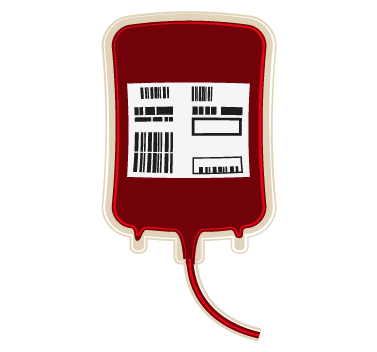
Science is just starting to grasp the fact that certain individuals make safer blood donors. In April 2004, a group of international transfusion experts convened in Toronto at a conference to decide what to do about blood from female donors that was causing serious (and sometimes fatal) transfusion reactions.
A woman’s immune system during pregnancy, even a pregnancy that lasts just a few months, detects the unborn baby’s foreign tissue and makes antibodies against them. These antigens are triggered by her partner’s uniquely different tissue type that he passes on to his progeny. After three pregnancies, a third of women have detectable antibodies. These antibodies are present in any blood that the woman donates. If the unfortunate recipient of this blood is genetically similar to the father of her children, a transfusion reaction might occur. This reaction could result in the recipient’s lungs filling with immune cells and fluid. The patient becomes profoundly short of breath and three-quarters of affected patients will need life-support for a few days until the reaction subsides. At the time of the 2004 conference, this reaction, termed “transfusion-related acute lung injury” was the leading cause of major complications and death from transfusion. The best estimate at that time was that 1 in every 5,000 recipients were affected.
In March 2001, the journal Transfusion published a provocative editorial titled, “Transfusion-related acute lung injury: femme fatale?” The editorial challenged the safety of how we use blood from female donors. Today, when I teach residents about this type of transfusion reaction, I stress that it is the donor that causes the reaction, and how important it is to report it to the blood bank.
At the conference, the transfusion medicine experts from the UK announced that they had already instituted changes to minimize the exposure of recipients to female plasma, the liquid part of the blood containing the dangerous antibodies. There was a bit of antagonism (and an audible gasp across an audience of hundreds of transfusion experts) towards the UK physicians. There was little scientific evidence that making these changes would decrease the rates of reactions. In transfusion medicine (and most other scientific disciplines), we don’t like to make change without evidence. The pressure from the UK forced the other blood suppliers to follow suit. From that point on, plasma for transfusion was derived only from men. Another change was that plasma from female donors would not be added to platelet units. The blood centres did not throw out the female plasma, it was sent to blood product manufacturers to be used to make manufactured plasma products like immunoglobulin and albumin. You could manipulate away the dangers of donations from female donors with the manufacturing process. It turned out that the UK transfusion experts were right. It worked. The rates of this type of reaction across the world dropped by half.
New research, new questions
Dr. Dean Fergusson, a scientist from the Clinical Epidemiology Program of The Ottawa Hospital’s research institute, and his colleagues have looked even deeper into the impact of donor characteristics on patient outcomes. Recently, they looked at the outcomes of over 30,000 recipients receiving blood from over 80,000 donors and found a curious thing. In that hypothesis-generating study, blood from younger and female donors was associated with an increased risk of death of the recipient. The reasons are unclear but need to be urgently investigated if we are to have the best outcomes for our patients.
Women make up half of the red blood cell donors. To make blood transfusions safer, as much plasma as possible is removed through the manufacturing process. In Canada, less than a tablespoon of female plasma is left in the red cell unit. Is it possible that the harm from female red cells is from this small amount of plasma, or perhaps the tiny number of immune cells in the product, or perhaps there is something different about the red blood cells themselves? Is it possible that males are safer blood donors than women?
If females were not allowed to donate blood, twice as many males would have to donate blood. It would take decades for blood suppliers to figure out how to mobilize that many men to come out to donate blood. Currently, 36,000 red blood cells units are transfused every day in the US. Each unit comes from a different donor and half of them are female. The US has one of the highest donor participation rates with 10 per cent of eligible donors giving at least one pint each year. Canada scores very low on this metric at less than four per cent. And my city, Toronto, even lower at two per cent. Even with high participation rates in the US, relying on men alone seems impossible without a major shift in our attitude towards blood donation. It would be even more challenging in Canada. But we need to consider that recipient safety could be improved through relying more on male donors. The only way to know if it is safer is to do it.
Eligibility hurdles
Some of the men reading this article might be thinking “well, I can’t give blood even though I want to because the blood collection agency has deferred me.” Donors are deferred for lots of different reasons: travel to malaria risk areas, previous travel to the UK (risk of variant Creutzfeldt-Jakob), recent tattoos, and many other reasons. For decades, the regulators in Canada and most other countries had mandatory requirements that when a blood donor answered “yes” to the question about “men who have sex with men”, they had to be deferred indefinitely as a donor. In the scientific literature, the term is shortened to “MSM”. In 2013, the Canadian regulator shortened the deferral for MSM to five years. Then in June of 2016, the Canadian regulator allowed the blood collection facilities to move to just a one-year deferral after MSM exposure. This is a good start but we need to figure out how put some science behind the questions that the regulators require blood agencies to ask.
Canadian Blood Services and Hema-Quebec, the two blood collection agencies in Canada, have allocated $3 million in research funding (thanks to Health Canada) to allow scientists to figure this out. We need to be patient — the scientists will have to present solid scientific data to the regulator to allow change to the current one-year deferral. We also must ensure our recipients don’t lose confidence in the blood supply. We must never slip up — it has happened before in Canada — and it must never happen again.
Part 6: My own donation journey…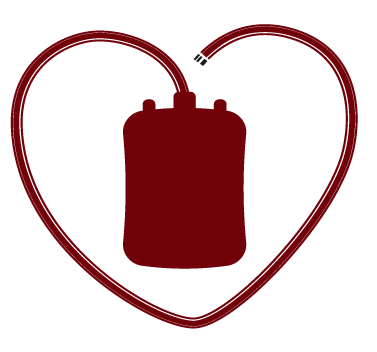
Donating blood is a really minor procedure that takes about an hour. I have done it 28 times, which is actually not very many. One of the pharmacists at my hospital has donated over 100 times. I have donated whole blood, platelets, bone marrow, and stem cells through apheresis. When it became understood that women were harming recipients from transfusion-related acute lung injury, I no longer could donate platelets. But I can still donate red cells.
In 2010, I received a call from the Canadian Blood Services’ bone marrow registry program “One Match” to tell me I had matched to someone and could I come back and have more definitive testing to confirm if I was the best donor for the patient. I went immediately to have the blood drawn, because the need for stem cell transplants are often urgent. I did not hear back for a few weeks. I was 41 years old at the time; one year above the usual “age” cut off. Typically, they want young stem cells before they are damaged through the process of aging. On the 23rd of December, I received a voice message at work asking me to call back. I was shaking. Partly excited that I might have been chosen and partly worried they were going to tell me I had failed to meet the cut (too old, the same female problem as above). But it was a yes and they wanted me to donate bone marrow.
Of course, I said yes. But then immediately called one of the transplant physicians to make sure bone marrow was medically necessary. It is only a 30-minute minor operation but you need a general anesthetic. It turned out it was necessary — for some bone marrow diseases patient outcomes are better with a bone marrow donation. The bone marrow harvest was completely uneventful. They took the equivalent of four units of blood or one litre of bone marrow fluid. My procedure was at 8 a.m. and by 10 a.m. I was in the hospital coffee line-up with my IV pole at Princess Margaret Hospital, the largest cancer centre in Toronto. By 4 p.m., I was home. Three days later I was back to work. A few weeks later they called me to say they didn’t get enough stem cells from the marrow and they needed more; the patient weighed more than me — likely a male recipient.
In a few weeks, with my bone marrow revved up with blood hormones, I donated stem cells through a special process called apheresis (it’s where you get hooked up to a machine that filters the white cells out of your blood). Shortly after the procedure, one of my pathology colleagues paged me to tell me he was looking at my blood film and he was worried I had leukemia. I laughed and reassured him it was just the hormones for the stem cell collection — my white count had risen from 4 to over 100 and that had sent him into a panic.
I was notified when my recipient received his transplant (I cried of course). I was sent a lovely letter from a family member, perhaps the grateful wife or mother, thanking me for donating. It was a cross border arrangement from Canada to the US. It is fascinating to think that my stem cells are somewhere in the US, hopefully nicely settled in their new environment.
Every time I donate blood I wonder where the unit goes. Units of red blood cells get released to a hospital about 7 to 14 days after collection, and typically get transfused within days of arriving at the hospital. There needs to be sufficient stocks to handle emergencies and the natural ups and downs of transfusion needs across the country.
Did the unit go to a young girl recovering from chemotherapy for leukemia? A little boy born with a heart defect who needed surgery within days of birth? To someone in an industrial accident? Or someone needing cardiac surgery or an organ transplant? A patient with bone marrow failure waiting for a stem cell transplant? A child with sickle cell anemia that needs blood once to twice a month? Or a new little human that came months too soon who needs my blood to nourish them for their first 42 days of life?
Thank you!
If you donated blood in this past year, thank you! Words cannot express how much you do for our patients. After 17 years of practicing transfusion medicine, I am still surprised at how miraculous the whole thing is. You are asked to come in to donate blood. You show up, no questions asked about what is done with the blood. And each and every time you save a life. And you come back year after year. You are a hero.
There are some of you who are completely healthy, and eligible, and didn’t donate last year. Listen to what I have to say: donating blood is very easy. It takes about an hour or so. If you are worried about the needle, don’t look when they put it in or take it out — it doesn’t really hurt going in and you can’t feel it coming out. If you are worried about fainting, you can prevent that by drinking lots of fluids the day before and for three days after. Adding more salt the day before also helps — reward yourself with a bag of salted chips. If you think you don’t have time, please think twice. Everyone can spare at least one hour or two per year to save a life.
Someday you may be on the receiving end of a blood transfusion, or someone you love will be. About half of us will need a transfusion someday, and usually it’s more than just one unit. Once you get sick, you will likely never be able to be a blood donor. So now's your chance.
You need to pay it forward — it’s the only way this works. If you are a strapping lad in the prime of your life and you have never donated before and you meet the criteria to donate (i.e. no tattoos in the last six months), go to the mirror and have a conversation with yourself. Then go to blood.ca to make an appointment to donate. Please don’t forget to show up, I am — we are — counting on you.
Dr. Jeannie Callum, Staff Hematologist and Director of Transfusion Medicine and Tissue Banks, Sunnybrook Health Sciences Centre, and Associate Professor, Department of Laboratory Medicine and Pathobiology, University of Toronto.





